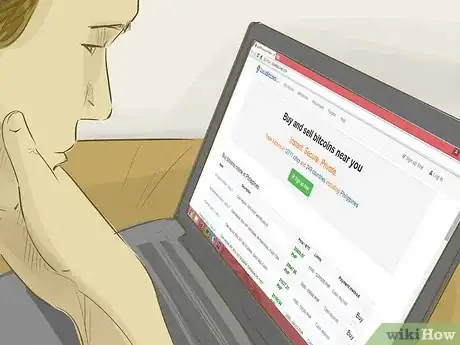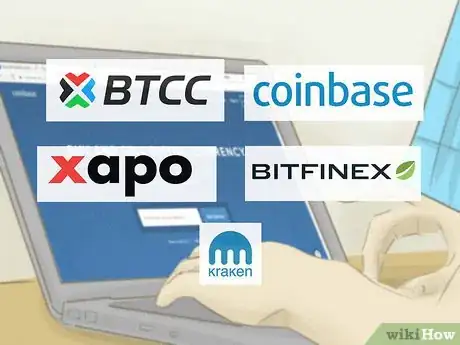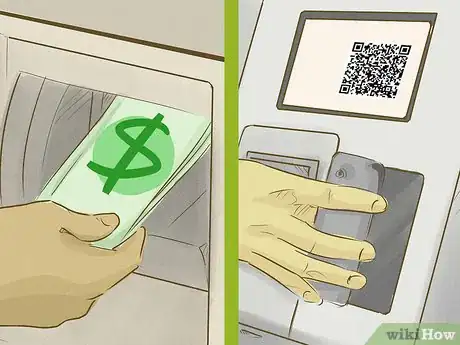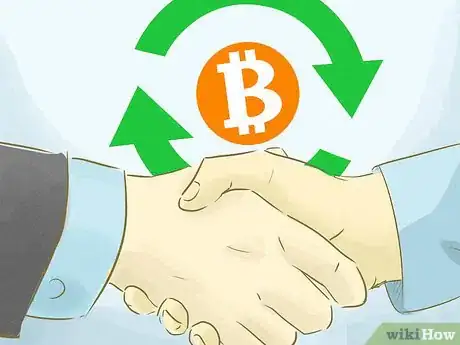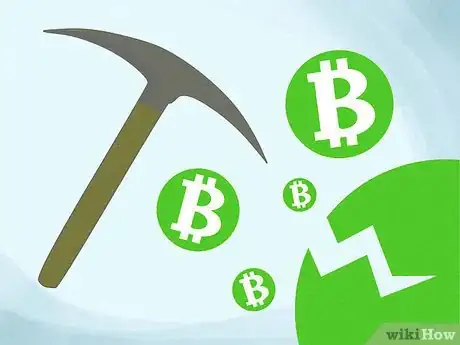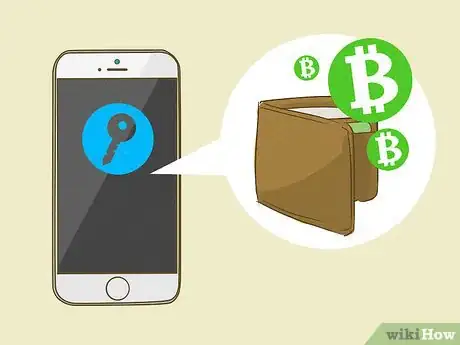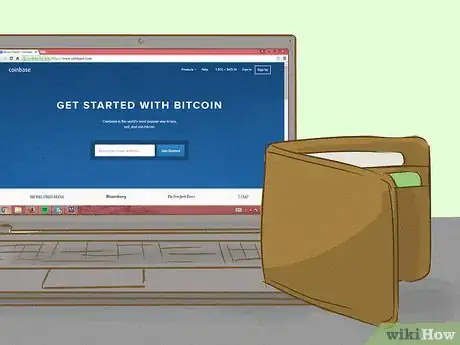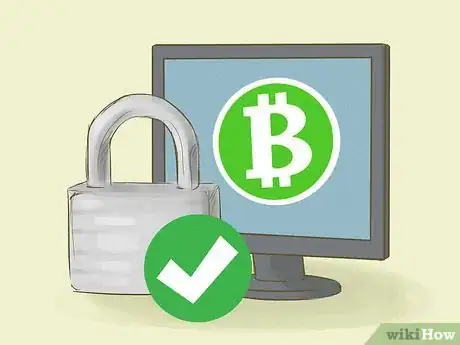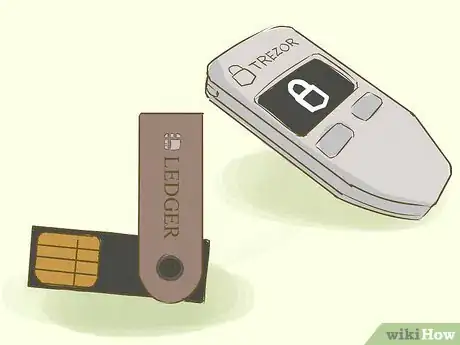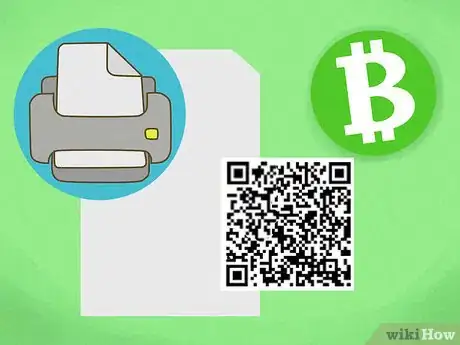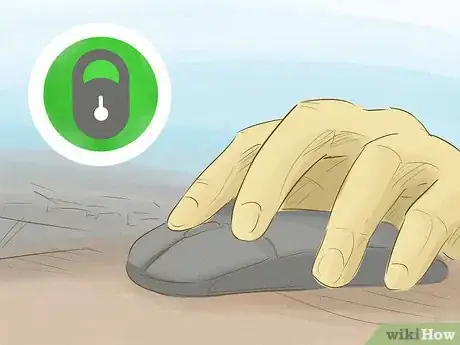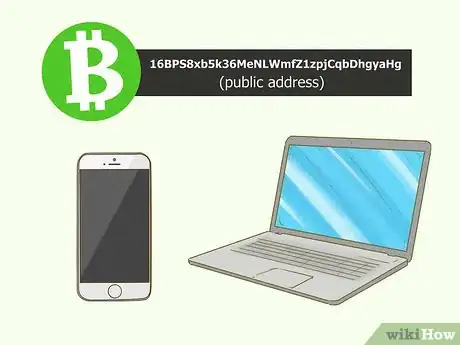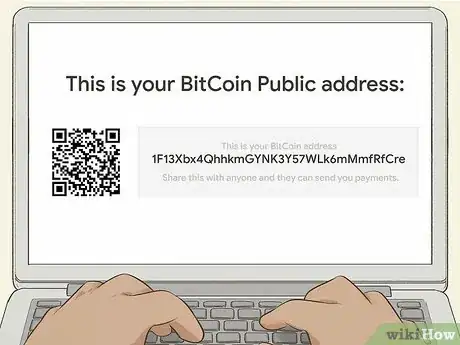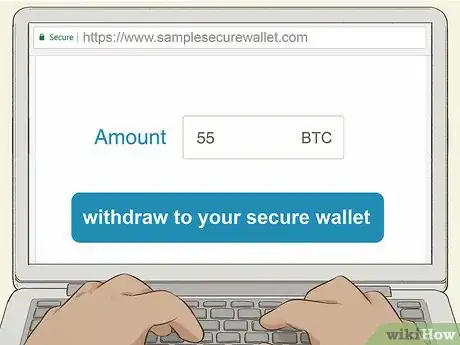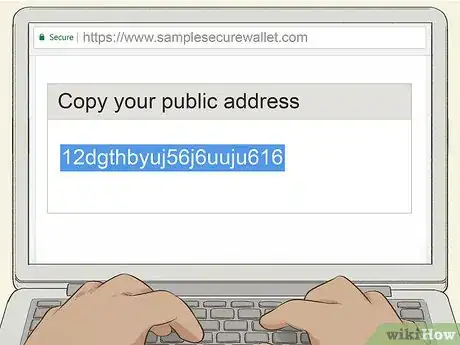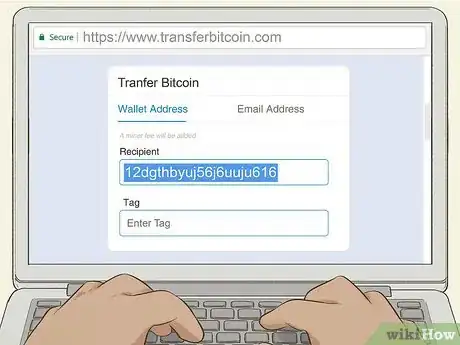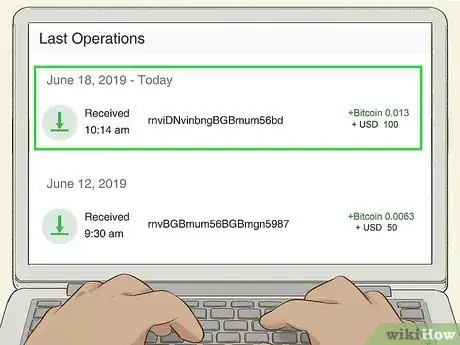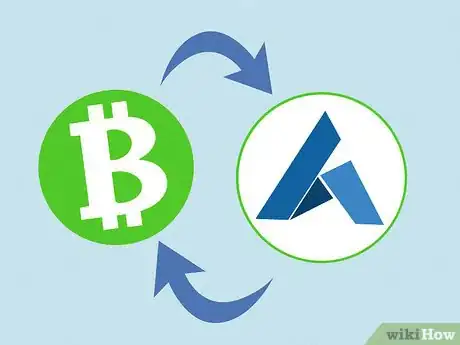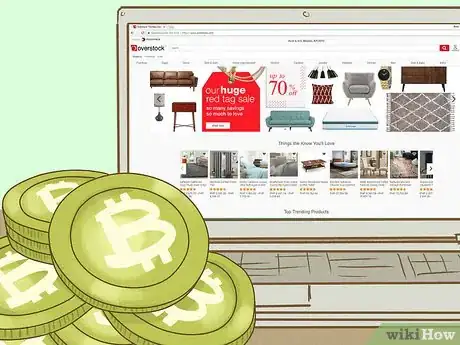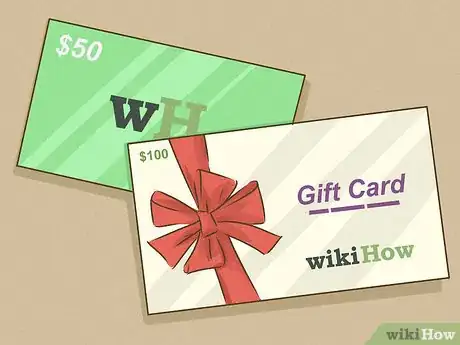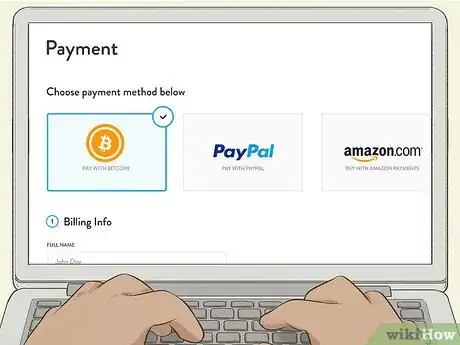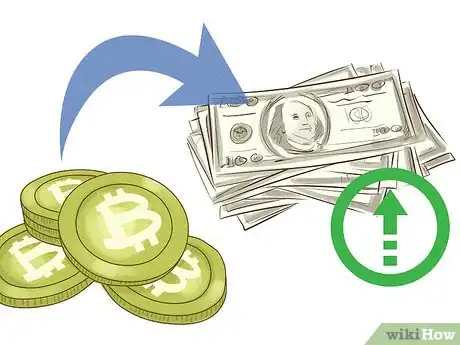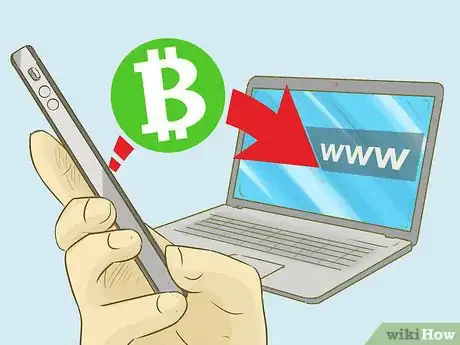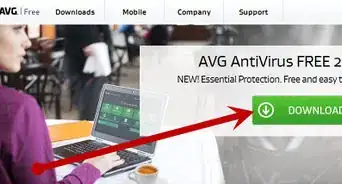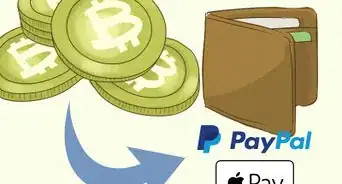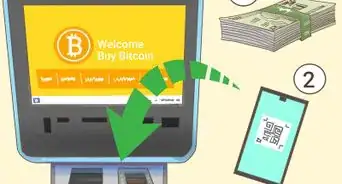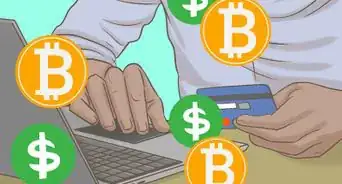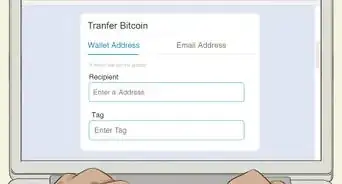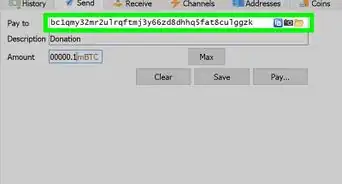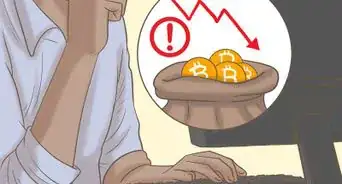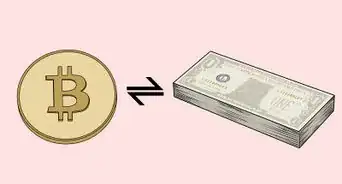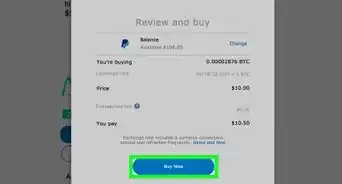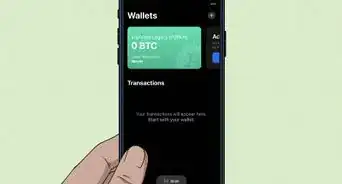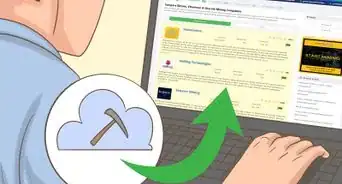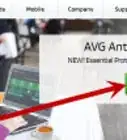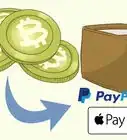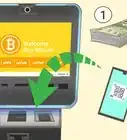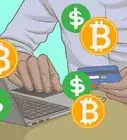This article was co-authored by Vinny Lingam and by wikiHow staff writer, Jennifer Mueller, JD. Vinny Lingam is and investor and the CEO of Civic Technologies, a blockchain-powered identity protection and management startup. Vinny is known as the 'Bitcoin Oracle' amongst the cryptocurrency community. He was awarded the Top Young ICT Entrepreneur in Africa Award in 2006, was on the World Economic Forum for Young Global Leaders in 2009, and was voted one of the top 500 CEOs in the World in 2015. He is also an investor on Shark Tank South Africa. He has a BS in E-Commerce from the University of South Africa.
There are 20 references cited in this article, which can be found at the bottom of the page.
wikiHow marks an article as reader-approved once it receives enough positive feedback. This article received 13 testimonials and 86% of readers who voted found it helpful, earning it our reader-approved status.
This article has been viewed 531,076 times.
Bitcoin was the first digital currency to eliminate the middleman. By avoiding banks and payment processors, Bitcoin developed a decentralized, worldwide market that requires only an Internet connection and an investment of fiat currency (national currency) if you want to participate. To get started, acquire some Bitcoin from an online exchange. Then set up a digital wallet to store your Bitcoin. From that point, send your Bitcoin to the wallet of an individual or merchant if you want to use it to pay for goods or services. You can also save your Bitcoin as an investment or trade it for other cryptocurrencies on an online exchange.[1]
Steps
Acquiring Bitcoin
-
1Buy small amounts of Bitcoin online directly. On some websites, such as Indacoin or SpectroCoin, you can immediately buy small amounts of Bitcoin using a major credit or debit card.[2]
- Limits to the amount of Bitcoin you can buy vary among sites. For example, Indacoin limits your first transaction to $50. After 4 days, you can make a second transaction of up to $100.
- If you want to buy small amounts of Bitcoin without having to register or create an account with a site, these transactions can be a good choice.
-
2Use a trading exchange to buy large amounts of Bitcoin. With online trading exchanges, such as Coinbase or Kraken, you can create an account to buy and sell large amounts of Bitcoin. These exchanges operate similar to stock exchanges, with bid/ask spreads.[3]
- If you live in the US, you might also consider Gemini, which is a licensed exchange with regulatory oversight. While it still doesn't have the security that a traditional bank might, the rules and regulations make it more secure than the average online exchange.[4]
- Opening an account at a trading exchange is similar to opening a bank or investment account. You provide your real name and contact information. When your identification is verified, you'll fund your account with the money you want to use to buy Bitcoin. Different exchanges may have account minimums, although some are as little as a few dollars.
Tip: Once you buy your Bitcoin through an exchange, it will be much safer if you transfer it out of your trading account into a more secure wallet. Large exchanges are a prime target for hackers.
Advertisement -
3Trade cash for Bitcoin at a Bitcoin ATM. Bitcoin ATMs are springing up in major cities around the world, and allow you to insert cash and purchase Bitcoin. The machine will either transfer your purchased Bitcoin to an online wallet for you to retrieve or spit out a paper wallet with a QR code for you to scan to retrieve your Bitcoin.[5]
- Go to https://coinatmradar.com/ to check the map for a Bitcoin ATM near you.
-
4Earn Bitcoin online for products and services. If you are already selling products or services online, you may be able to add Bitcoin to your online shop or website as an accepted method of payment.[6]
- If you have your own website and want to accept Bitcoin, you can download promotional graphics at https://en.bitcoin.it/wiki/Promotional_graphics.
- Bitcoin auction sites, such as OpenBazaar, allow you to open a shop, similar to eBay, and sell products for Bitcoin.
-
5Buy Bitcoin from another person offline. As with any currency, you can meet up with someone and trade cash (or some other commodity) for Bitcoin. Go to https://localbitcoins.com/ to connect with someone in your area who is interested in an offline transaction.[7]
- Observe caution and only agree to purchase small amounts until you trust the person. Don't carry large amounts of cash on your person. Meet in a public place, or in the parking lot of your nearest police station, for security.
-
6Run a mining program to mine Bitcoin. To "mine" Bitcoin, you set up computers to solve complex equations and add the solutions to the blockchain. You typically need expensive mining equipment and software, as well as dedicated servers, to mine Bitcoin successfully. Some cloud mining companies will allow you to mine with them, but generally, it's more cost-effective to simply buy Bitcoin on the exchange than to attempt to mine it.[8]
- In the early days of Bitcoin, it was possible for individuals to mine Bitcoin profitably. However, as of 2018, most profitable mining operations are run by large, specialized companies.
Setting Up Your Bitcoin Wallet
-
1Try a mobile wallet if you want access to your Bitcoin. Mobile wallets are smartphone apps, available on both iPhone and Android. These apps are user-friendly and possibly the best choice for beginners, particularly if you only have a small amount of Bitcoin and want to keep it accessible.[9]
- Some popular Bitcoin wallet apps include Airbitz and Breadwallet. Unlike Breadwallet, Airbitz manages accounts using usernames and passwords and doesn't actually store or have access to your Bitcoin.
-
2Create a web wallet for online use. If you plan on using your Bitcoin primarily for online purchases, a web wallet is likely the best choice for you. They are convenient and easy to use, so you don't need to be particularly tech-savvy.[10]
- A web wallet works like any other online account. You simply register, transfer your Bitcoin, and then log on to manage your wallet.
- Because of the security risks with web wallets, it's much better to go with a hybrid wallet, such as Copay, that can be used across multiple devices and provides additional layers of security not found on basic web wallets.
-
3Download a software wallet if you want more control. Software wallets, as the name implies, require you to download software on your computer. Once the software is downloaded, you don't have to rely on third-party services to complete Bitcoin transactions. The blockchain can take as long as 2 days to download, depending on your connection speed. You may want to download the wallet on a dedicated computer.[11]
- Bitcoin Core is the "official" wallet for Bitcoin, but it may be frustrating due to its lack of features and slow processing speeds. However, it does offer better security and privacy because it doesn't rely on external servers and all transactions are routed through Tor.
- Armory is a secure software wallet with more features than Bitcoin Core, but it's also technologically complex and can be intimidating.
-
4Invest in a hardware wallet for increased security. Hardware wallets, also referred to as "cold storage," are small devices that are designed to be a Bitcoin wallet and nothing else. Since no software can be installed on them, they represent the height of security.[12]
- Hardware wallets start at around $100. You don't have to buy the most expensive hardware wallet to get the best security. One of the most highly rated hardware wallets, the Trezor, costs only $109.
- If you have an old iPhone brick just lying around collecting dust, you can wipe it and install nothing but a mobile wallet app, such as Breadwallet, and use it as a cold storage device as well.
Tip: If you plan on buying and using other cryptocurrencies in addition to Bitcoin, look for a hardware wallet that supports multiple cryptocurrencies, such as Ledger or Trezor.
-
5Print a paper wallet for secure long-term storage. Paper wallets are cumbersome if you plan to use your Bitcoin frequently in the short term. However, if you're just buying your Bitcoin to hold it for a long period of time as an investment, it will be most secure in a paper wallet.[13]
- With a paper wallet, the public and private addresses for your Bitcoin are stored on a piece of paper in QR code form. Since your Bitcoin is totally offline, it is completely secure from hackers. However, you have to scan the codes to regain access to your funds.
- While a paper wallet secures your Bitcoin from hackers, keep in mind that it's also paper, which means it's still vulnerable to fires, floods, and anything else that could destroy paper (such as a hamster or a teething puppy). Keep your paper wallet in a locked, secure location.
-
6Keep your wallet secure. No matter how secure your wallet is, you can still make it more secure. Make regular backups of your Bitcoin wallet, and store multiple backups in multiple places so you still have access if one is destroyed.[14]
- For example, you might keep a backup of your wallet at home, and another at work (provided you have someplace to keep it secure). You could keep a backup in the glovebox of your car as well. You might also consider leaving a backup in the care of a trusted friend or family member.
- If you have a paper wallet, you can print multiple copies to keep in different places as backups.
Tip: Encrypt any backups of your wallet that you keep online. Use a strong password and add 2-factor authentication whenever possible.
-
7Create public and private Bitcoin addresses. Your public address allows you to receive Bitcoin from other people. The private address is the one you'll use to send Bitcoin to others. Public addresses are a stream of about 30 random alphanumeric characters that start with either a "1" or a "3." Private addresses are longer and start with a "5" or a "6."[15]
- Your wallet generates these addresses, or "keys." They typically are provided as machine-readable QR codes. By scanning the code, you can easily pay for products and services.
-
8Use your public address to transfer your Bitcoin to your wallet. The public address is a version of the public key similar to a bank account number. Once you've set up your wallet, use this public address to send the Bitcoin you've purchased to your wallet.[16]
- Your exchange account has an option to "send" or "withdraw" Bitcoin. Select that option, then enter the public address of your wallet as the place to send your Bitcoin. It may be several hours before your Bitcoin shows up in your wallet.
Completing a Bitcoin Transaction
-
1Transfer the Bitcoin you want to use to an accessible wallet. If you're buying something online or simply paying an individual in Bitcoin, you may be able to copy the information you need to complete the transaction from any type of wallet. However, if you want to pay for goods and services in person, you'll need to have Bitcoin in a wallet you can access on the go, such as a mobile wallet.[17]
- Many brick-and-mortar merchants use apps, such as BitPay, to process their Bitcoin transactions. To use your mobile wallet, make sure it's compatible with the app the merchant is using. When you download the mobile wallet app, it will tell you which services it is compatible with.[18]
-
2Copy or scan the payment information. The individual or merchant you want to pay will give you the public address for their wallet or account. From your wallet, you'll send your Bitcoin to this address as payment.[19]
- Typically, you'll receive an invoice that specifies the amount of Bitcoin you owe the individual or merchant. Because Bitcoin value is volatile, this invoice will only be valid for a brief window of time – maybe 10 or 15 minutes.
- Many individuals and merchants provide a QR code that you can simply scan with your phone from your mobile wallet app to send your Bitcoin to the right place.
-
3Send your Bitcoin to the address you copied. Within your wallet app, choose the option to send your Bitcoin to another wallet. Enter the payment information the individual or merchant gave you along with the amount of Bitcoin you want to send them. Then tap or click the button to send the Bitcoin.[20]
- If you scanned a QR code from within your wallet app, all of this information will be filled in for you. Look over it before you click send to make sure the amount of Bitcoin is correct.
Tip: Bitcoin transactions incur fees for miner processing and network costs. These fees may be added to your total purchase price or absorbed by the merchant or individual who accepts your Bitcoin.
-
4Wait for the transaction to be confirmed. Once you submit your payment, the transaction is sent to the blockchain for confirmation. Miners (Bitcoin users with powerful computers) work to confirm the transaction. Typically it takes 10 to 30 minutes to confirm a transaction.[21]
- Once your transaction is confirmed, it can't be reversed. If you're buying something from a brick-and-mortar merchant, you'll likely get whatever you bought before the transaction is actually confirmed. However, you may be sent another invoice for payment if the transaction isn't confirmed or if it takes several hours to confirm.
Exploring Ways to Use Your Bitcoin
-
1Trade your Bitcoin for other cryptocurrencies. Some of the newer cryptocurrencies, such as Ardor, can only be bought with another cryptocurrency. Trading your Bitcoin enables you to diversify your cryptocurrency holdings.[22]
- If you want to trade cryptocurrencies, consider an exchange such as Abra, which allows you to have multiple wallets on the same account.[23] That way, you can more easily manage multiple types of cryptocurrency, as well as fiat currency, without having to transfer between multiple exchanges.
-
2Make online purchases using Bitcoin. Many online retailers and service providers, including Overstock, Microsoft, and Newegg, accept Bitcoin as payment. When you're browsing an online shopping site, look for the Bitcoin logo.[24]
- Many vendors on Etsy and Shopify also accept Bitcoin payments.
- The number of retailers and service providers that accept Bitcoin is growing every day, so if one of your favorite sites doesn't accept Bitcoin now, that might change. You may also want to send a suggestion to their customer service center requesting that they accept Bitcoin.
-
3Convert your Bitcoin into gift cards. Led by the website Gyft, there are many gift card websites that accept Bitcoin as payment for gift cards to major online and brick-and-mortar retailers, including giants such as Amazon, Starbucks, and Target.[25]
- Some websites, such as Gyft, offer discounts and rewards to customers who purchase gift cards using Bitcoin.
-
4Pay for services or subscriptions with Bitcoin. Online services such as VPN networks, domain name registers, and internet service providers often take Bitcoin payments. Many websites also allow you to use Bitcoin to buy subscriptions or premium services.[26]
- The online dating site OkCupid accepts Bitcoin payment. You can also subscribe to Bloomberg, the Chicago Sun-Times, and other online newspapers.
- If you have a blog on WordPress, you can use Bitcoin to pay for additional services and blog options.
-
5Hold your Bitcoin and wait for its value to increase. Because cryptocurrencies are volatile, holding Bitcoin as an investment can be fairly risky. However, if you're willing to watch the market carefully, you may be able to make a profit.[27]
- Be wary of companies or websites that claim they will double your Bitcoin, offer you a high interest rate, or help you invest your Bitcoin to great profit. Most of these sites and companies are scams or pyramid schemes. You may see a good rate of return for a few months, but then it will drop to nothing.
- You can day trade with Bitcoin just as you would day trade with stocks or other commodities. However, this is a method that requires knowledge and practice to be successful.
-
6Make charitable donations in Bitcoin. There are numerous charities and nonprofit organizations that accept donations in various cryptocurrencies, including Bitcoin. Many of these organizations, such as the Electronic Frontier Foundation (EFF) and The Internet Archive, are dedicated to freedom on the internet.[28]
- Before the 2017 holiday season, Bitcoin published a list of 15 nonprofit organizations that accept Bitcoin donations on its news site at https://news.bitcoin.com/fifteen-ways-to-donate-bitcoin-to-charity-this-season/.
Tip: As with online retailers, look for the Bitcoin logo on the donation site for your favorite charity or nonprofit organization. If they do not yet accept Bitcoin, contact the organization and ask them to consider it.
-
7Find local merchants who accept Bitcoin. While the transaction costs and slow confirmation times make Bitcoin an inconvenient payment method for brick-and-mortar merchants, there are still some who accept it. However, there are still major retailers who accept Bitcoin payments.[29]
- For a mappable list of retailers who accept Bitcoin payments, visit https://coinmap.org/welcome/
- As with online retailers, look for the Bitcoin logo alongside the logos of major credit cards on the door of the shop or by the register.
Warnings
- Bitcoin is often believed to be totally anonymous. However, the current version of Bitcoin is pseudonymous and somewhat trackable. Do not use Bitcoin for illegal purposes, as law enforcement has means to track your purchase back to you.[30]⧼thumbs_response⧽
- Bitcoin transactions are irreversible. Keep that in mind when making any trades or purchases using the cryptocurrency.[31]⧼thumbs_response⧽
References
- ↑ https://blockgeeks.com/guides/what-is-bitcoin/
- ↑ https://www.weusecoins.com/en/getting-started/
- ↑ https://www.coindesk.com/information/how-can-i-buy-bitcoins/
- ↑ https://gemini.com/
- ↑ https://www.cnbc.com/2018/05/31/bitcoin-atms-in-america-and-around-the-world.html
- ↑ https://www.weusecoins.com/en/getting-started/
- ↑ https://www.coindesk.com/information/how-can-i-buy-bitcoins/
- ↑ https://99bitcoins.com/should-i-invest-in-bitcoin-heres-what-you-need-to-know/
- ↑ https://www.weusecoins.com/en/getting-started/
- ↑ https://www.weusecoins.com/en/getting-started/
- ↑ https://www.weusecoins.com/en/getting-started/
- ↑ https://news.bitcoin.com/bitcoin-beginners-hardware-wallet-use/
- ↑ https://www.coindesk.com/information/paper-wallet-tutorial/
- ↑ https://bitcoin.org/en/secure-your-wallet#backup
- ↑ https://bitsonline.com/bitcoin-public-private-addresses/
- ↑ https://coincentral.com/how-send-receive-bitcoin-address/
- ↑ https://cointelegraph.com/bitcoin-for-beginners/what-is-bitcoin-wallets
- ↑ https://support.bitpay.com/hc/en-us/articles/115005559826
- ↑ https://support.bitpay.com/hc/en-us/articles/115005559826
- ↑ https://support.bitpay.com/hc/en-us/articles/115005559826
- ↑ https://cointelegraph.com/bitcoin-for-beginners/what-can-i-buy-with-bitcoins
- ↑ https://cryptocurrencyfacts.com/how-to-trade-cryptocurrency-for-beginners/
- ↑ https://www.abra.com/blog/two-wallets-better-one-hold-fiat-bitcoin-time-abra/
- ↑ https://support.bitpay.com/hc/en-us/articles/115005559826
- ↑ https://cointelegraph.com/news/3-ways-to-turn-bitcoins-into-gift-cards
- ↑ https://cointelegraph.com/bitcoin-for-beginners/what-can-i-buy-with-bitcoins
- ↑ https://99bitcoins.com/should-i-invest-in-bitcoin-heres-what-you-need-to-know/
- ↑ https://news.bitcoin.com/fifteen-ways-to-donate-bitcoin-to-charity-this-season/
- ↑ https://cointelegraph.com/bitcoin-for-beginners/what-can-i-buy-with-bitcoins
- ↑ https://unblock.net/how-to-use-bitcoin-anonymously/
- ↑ https://bitcoin.org/en/you-need-to-know
About This Article
To use Bitcoin, start by purchasing some Bitcoins online, through a trading exchange, or using a Bitcoin ATM. Then, get a digital wallet on your phone or computer, which is where you'll store your Bitcoins. Once you have some Bitcoins, you can make purchases with them, trade them for other cryptocurrencies, or hold onto them in hopes that their value will increase over time. If the value of your Bitcoins goes up, you can sell them to make a profit off your initial investment. To learn how to use different kinds of Bitcoin wallets, scroll down!
